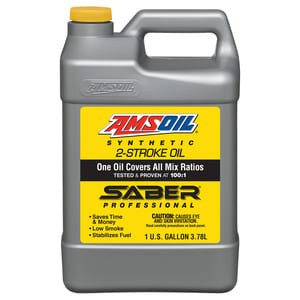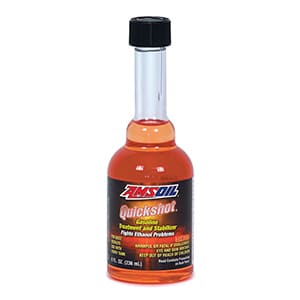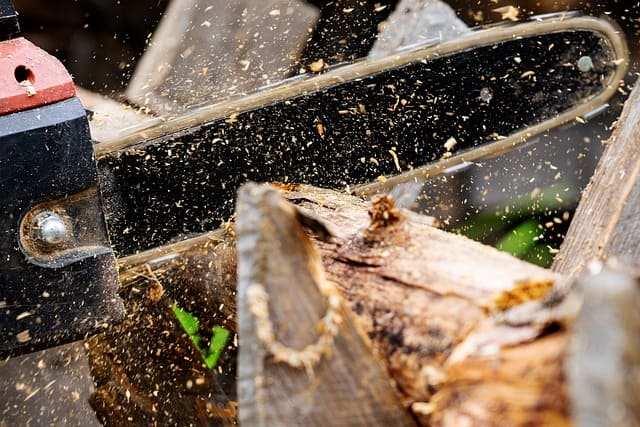Maintaining your chainsaw is imperative to ensure optimal performance and longevity. To achieve top-tier cutting precision, it is crucial to adhere to these five essential chainsaw maintenance guidelines.
Best Way To Sharpen A Chainsaw Chain
Firstly, the sharpness of the chain should be a top priority. A keen edge is fundamental for seamless cutting, whereas a blunt chain can significantly impede the cutting process. While professional sharpening services may entail a financial investment, the dividends it yields in averting potential complications are substantial. Should you elect to undertake chain sharpening personally, it is vital to utilize the precise file size specified on the chain’s packaging or in the owner’s manual. Remember to file at the correct angle and maintain consistent strokes for each tooth. Additionally, meticulous attention to the depth gauges positioned in front of each tooth is essential to prevent over-filing, which could result in the saw biting too deeply or becoming unbalanced. Utilizing a file gauge guarantees the accuracy of your sharpening technique, promoting optimal chainsaw functionality.

Tips To Adjust Chainsaw Tension
When adjusting the chain tension on your saw, it is crucial to strike the right balance. Ensuring that the chain is not overly tight is essential as excessive tension can lead to the saw binding or stalling during operation. In some cases, if the chain is tightened too much on a bar without a roller tip, it runs the risk of overheating, which can cause damage to the equipment.
To properly adjust the chain tension, remember to elevate the tip of the bar as high as possible before tightening the tensioning screw. This step helps in the removal of any slack from the underside of the bar, ensuring that the chain is appropriately tensioned for optimal performance.
For effective lubrication while operating your saw, it is recommended to use high-quality products such as AMSOIL Semi-Synthetic Bar and Chain Oil. This specially formulated oil plays a vital role in keeping the chain well-lubricated throughout its use. By reducing friction and heat buildup, this oil helps in extending the lifespan of your equipment and maintaining its efficiency.

Breaking In A New Chain
Breaking in a new chain is a critical step to ensure optimal performance and longevity. To properly break in your new chain, it is essential to follow a few key steps. Begin the process by thoroughly soaking the chain in AMSOIL Semi-Synthetic Bar and Chain Oil for a few hours. This will guarantee that all pivot points within the chain are well lubricated, setting a solid foundation for smooth operation.
Once you have soaked the chain, hang it from a nail to allow any excess oil to drip back into the pan. Install and tension the chain properly, then run it until it warms up. As the chain heats up, it will naturally loosen. Once the chain is warm but powered off, re-tension it to ensure the perfect fit for your equipment.
Next, start using the chain for light-duty tasks such as cutting limbs and small branches for about 30 minutes. This initial workload will help to further settle the chain into its optimal performance state. After this initial period, re-tension the chain once more before you embark on heavier duties.
By following these detailed steps, you will be fully prepared to tackle any heavy-duty work with confidence, knowing that your new chain has been properly broken in for peak performance.

Clean Your Chainsaw Air Filter
Ensuring the cleanliness of your chainsaw’s air filter is essential for optimal performance and longevity of the tool. The air filter serves as a critical barrier that shields the engine from ingesting harmful sawdust and debris, preventing potential issues such as carburetor clogs, starting difficulties, and inefficient operation. Without proper maintenance of the air filter, contaminants can infiltrate the system and cause damage to essential components like the piston rings, leading to decreased compression and a notable reduction in power output.
In situations where chainsaws are equipped with a screen filter instead of the traditional foam or paper filter, a useful technique involves employing an air compressor to blow air in reverse through the filter. This method effectively dislodges and prevents debris from becoming lodged deep within the filter, ensuring continued optimal performance. In the absence of an air compressor, gently tapping the filter on a sturdy surface like the edge of a workbench can also help dislodge surface debris.

For chainsaws utilizing foam or paper filters, regular replacement is imperative to maintain peak efficiency. This practice is not only a preventative measure but also a cost-effective solution compared to the expenses associated with replacing the entire chainsaw unit. Regularly monitoring and maintaining the air filter will significantly enhance the performance and lifespan of your chainsaw, ultimately saving you time and money in the long run.
Treat Your Chainsaw Fuel
It is crucial to use fresh gasoline when operating your chainsaw. Many chainsaws that are owned by homeowners often sit idle in the garage instead of being used for cutting wood. Unfortunately, gasoline has a tendency to deteriorate after just 30 days, leading to the development of gums and varnish that can potentially clog carburetors and cause starting issues and inconsistent performance. To avoid these problems, it is recommended to only prepare enough fuel for the immediate task at hand. If you anticipate that your chainsaw will remain idle for longer than 30 days, it is advisable to opt for a two-stroke oil that incorporates a gasoline stabilizer, such as the high-quality AMSOIL SABER® Professional Synthetic 2-Stroke Oil. SABER® Professional not only includes a top-notch fuel stabilizer, but it also effectively fights against harmful carbon buildup to ensure your chainsaw’s exhaust ports and spark-arrestor screens stay clean and in optimal condition. This comprehensive solution guarantees peak engine performance and power output, giving you the reliability you need for any cutting task.

Furthermore, choosing a high-quality two-stroke oil is often underestimated but plays a vital role in the overall maintenance of your chainsaw. By investing in a reliable oil product, you can significantly prolong the lifespan of your equipment and enhance its operational efficiency.
For the longevity of your gasoline, consider utilizing AMSOIL Quickshot® to stabilize the fuel and keep it fresh for up to six months. This additional step not only preserves the quality of the gasoline but also ensures that your chainsaw remains ready for action whenever you need it, without any performance hiccups.
By utilizing these preventive measures, you can ensure optimal performance and longevity for your chainsaw.

